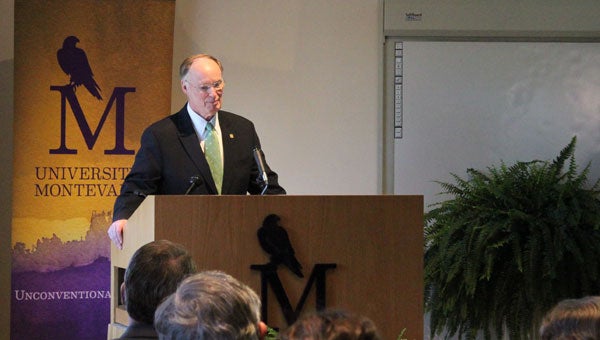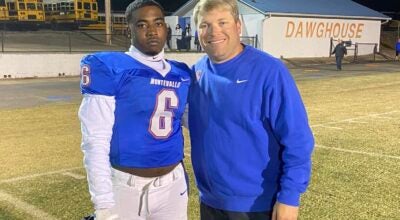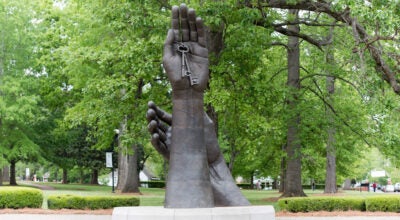UM implements cutting-edge safety technology
Published 9:00 am Friday, December 14, 2012

Gov. Robert Bentley said he was “proud of the work done at the University of Montevallo” in terms of preparing for emergency situations with Virtual Alabama during a press conference Dec. 13. (Reporter photo/Christine Boatwright)
By CHRISTINE BOATWRIGHT / Staff Writer
MONTEVALLO – The University of Montevallo made history Dec. 13 as the first institution of higher education to fully implement “showcase innovation” that improves the safety of the institution,” according to Gov. Robert Bentley.
Virtual Alabama is a “high-tech imagery system that helps first responders plan for emergency situations,” Bentley said.
The program was created originally after Hurricane Katrina devastated the gulf coast in 2005, and has since been utilized in other disasters, such as the 2010 Deepwater Horizon oil spill and April 2011 tornadoes.
“When disaster takes place, (Virtual Alabama) puts vital information at the fingertips of first responders,” Bentley said.
Spencer Collier, director of the Alabama Department of Homeland Security, said the applications of Virtual Alabama are “limitless.”
“It’s a wise investment of state homeland security money, and something we can be proud of in this great state,” Collier said.
UM President John W. Stewart III said the university is serving as a “national model.”
“We place an incredible premium on the safety of or students here,” Stewart said. “Virtual Alabama is another way of our actions being louder than our words.”
Todd Strange, chair of the UM Board of Trustees and mayor of Montgomery, said the university continues to be “unique” in utilizing the system. According to Strange, Viritual Alabama will enhance safety and security, as well as operations on campus.
Project Director Lamar Davis said Virtual Alabama uses Google Earth technology, and will allow first responders to respond with “real-time awareness” with access to floor plans and utility information, as well as live surveillance video feeds.
Davis used the example of a natural gas leak to demonstrate the system’s usability. Virtual Alabama can show natural gas lines in the school, as well as shut-off valves for responders to access. The information is stored on the website, allowing for rapid response.
The UM Police Department will maintain and update the system daily.
The Alabama Homeland Security grant program funds the system for about $500,000 per year, Collier said.
“Knowledge of details, from the size of light bulbs required in room fixtures to the location of gas lines, will conserve valuable time and travel as our maintenance crews prepare to perform a repair without prior reconnaissance,” said UM Physical Plant Director Billy Hughes. “This translates into real savings for the university.”









